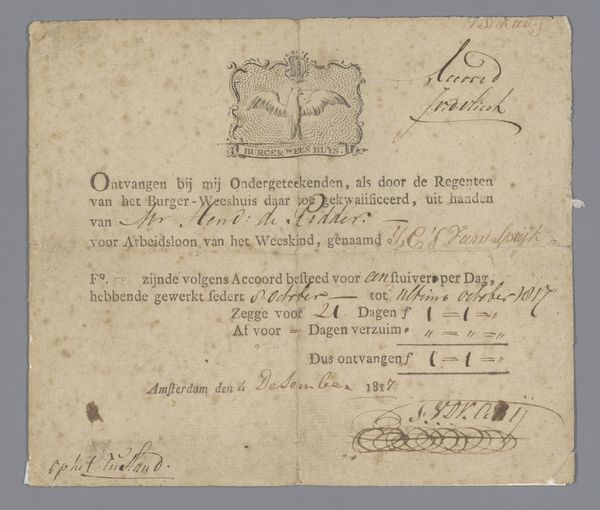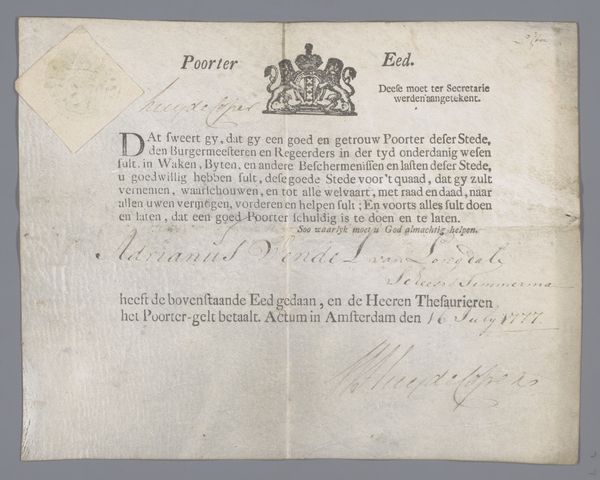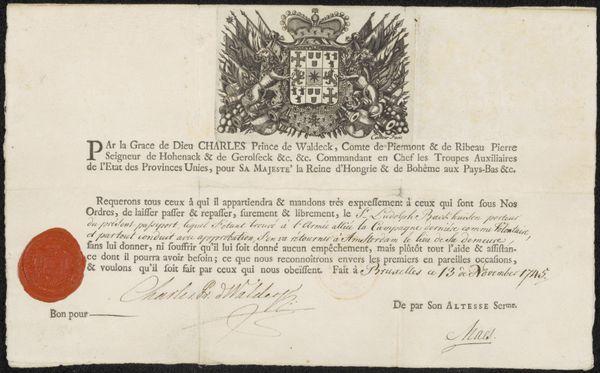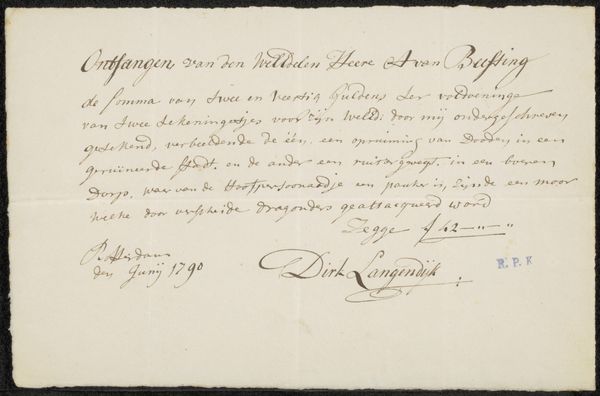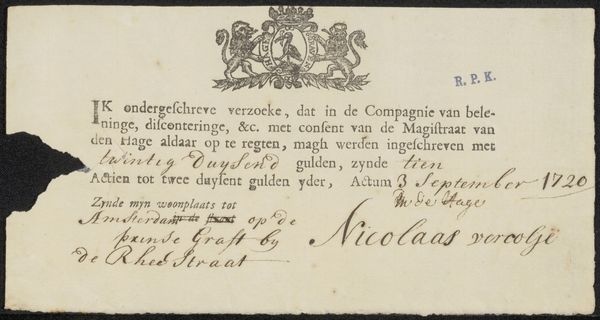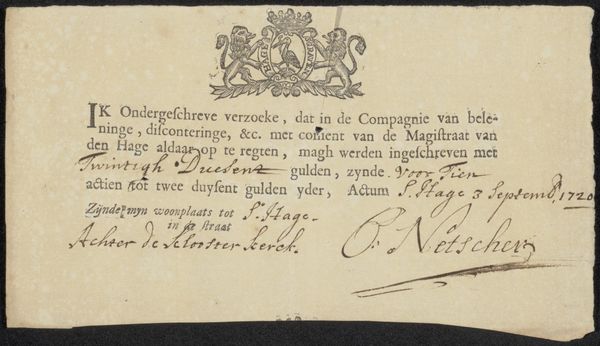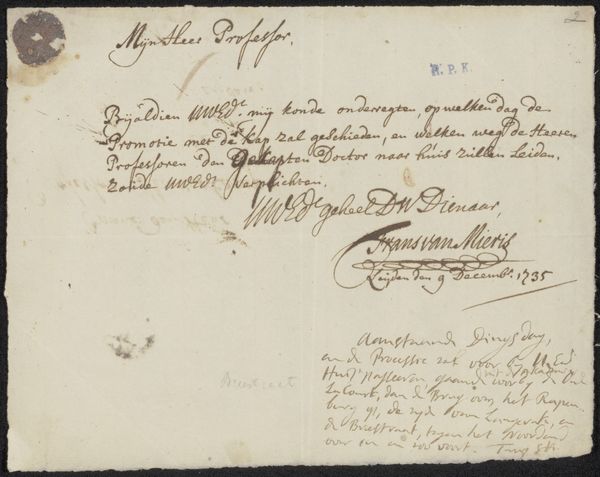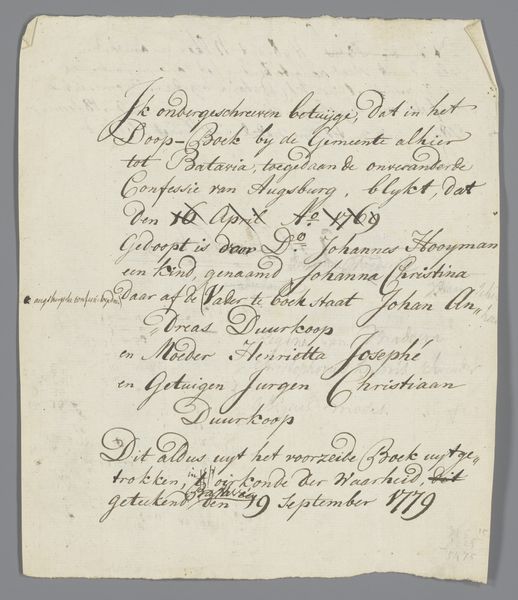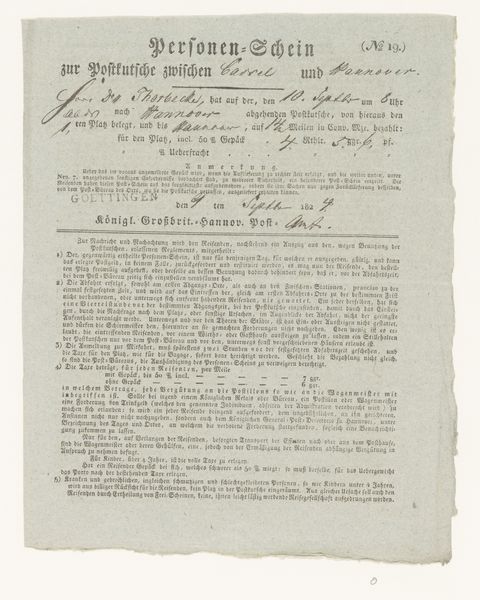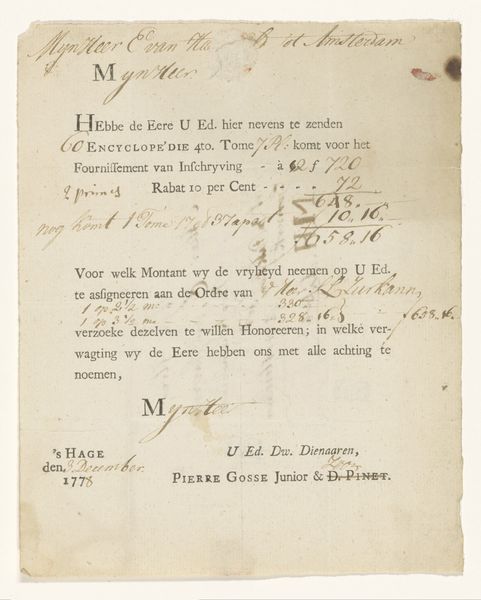
paper, ink
#
paper
#
ink
#
genre-painting
#
calligraphy
Dimensions: height 16 cm, width 19.9 cm
Copyright: Rijks Museum: Open Domain
Curator: "Poorter Eed", possibly from 1783, made with ink on paper. What strikes me is how everyday life is captured through this document. What's your initial impression? Editor: I find it intriguing – it looks like an official document. I am drawn to the combination of printed text and handwritten calligraphy, how would you interpret its production and meaning? Curator: It's essentially a citizen's oath, likely required for civic participation in Amsterdam. The interplay between printed and handwritten elements is key. What kind of labour went into its creation, who was producing it? The pre-printed form represents standardization, bureaucratic processes. Editor: And the handwritten parts? Curator: Those demonstrate individual engagement. This "Margareta Caldrina Kressel" takes the oath; her name and the witness's are inscribed manually. Consider the paper itself - where was it made, how accessible was it, what does the materiality of the paper tell us? Editor: That's interesting. It wasn't something churned out on a printer, so the paper and calligraphy represent higher value, and therefore, greater import to the oath. Curator: Precisely! The materiality of the oath reflects on the power structures it upholds. How is the document physically constructed as a means of asserting that civic commitment? What implications arise from consuming the document through reading and keeping it? Editor: I never thought about an oath in those terms. It goes beyond just the words! Curator: It certainly does! Considering how such an ordinary object connects to social context brings to light elements of materiality, labor, and cultural power!
Comments
No comments
Be the first to comment and join the conversation on the ultimate creative platform.
